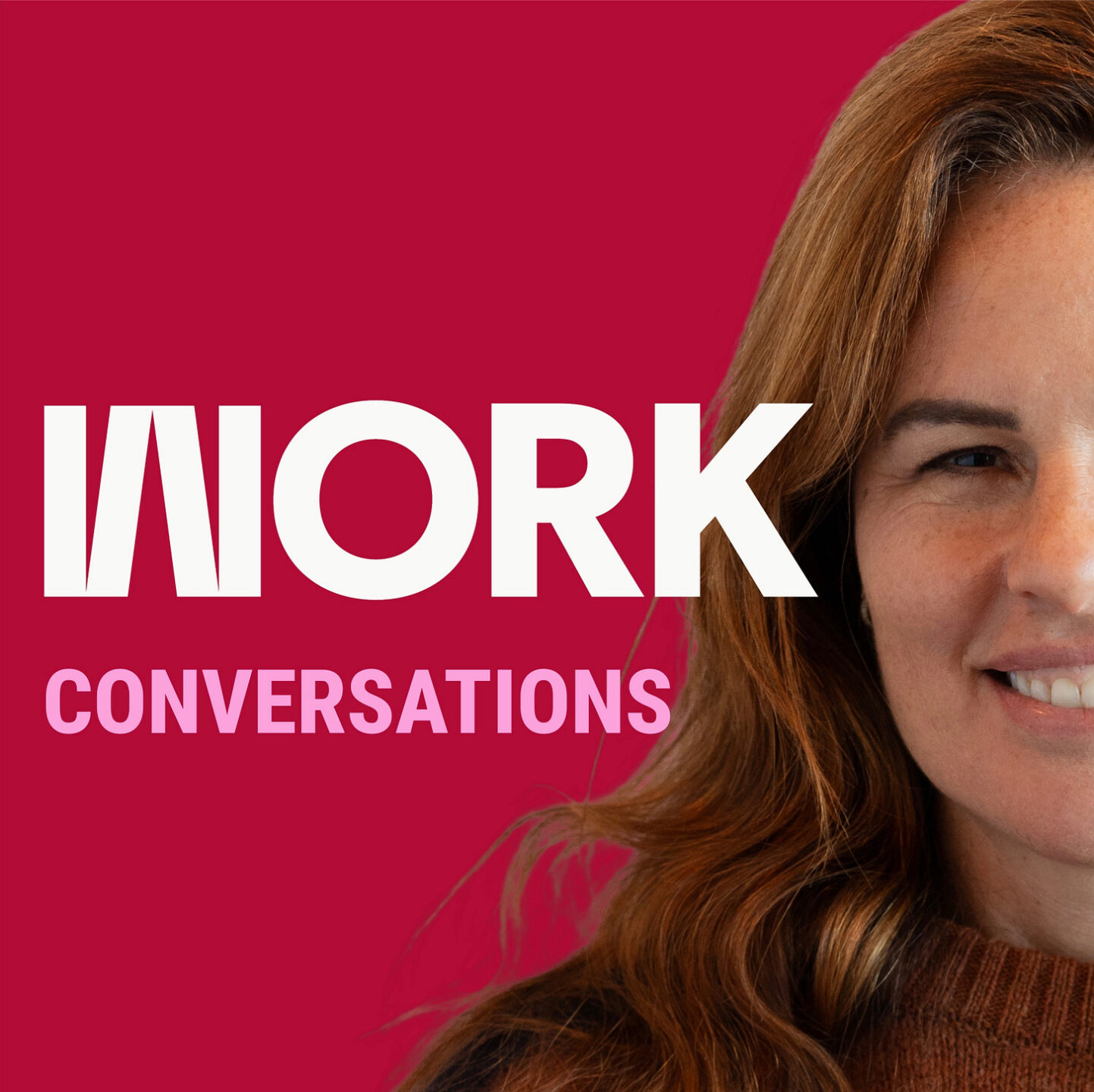
Erika Ayers Badan: What Do You Want?
Please meet Cynthia Pong. She came to me by way of super-connector and personal board director an occasional SVU actor, Sarah Storm. Cynthia Pong packs…
Thought Leader: Erika Ayers Badan

The first Oracle Health Conference made it clear that with the acquisition of Cerner, a rich portfolio of cloud infrastructure and application services, and new AI-powered healthcare capabilities, Oracle is uniquely placed to serve the evolving needs of this critical community.
Below are some of the highlights from the conference, which was colocated with Oracle CloudWorld in Las Vegas and ran from September 18 to 20. Travis Dalton, executive vice president and general manager of Oracle Health, kicked off the conference by inviting customers to the keynote stage to talk about how they’re using Oracle’s technology solutions to serve patients and support overburdened workers.
His Excellency Dr. Majid Al Fayyadh, CEO of King Faisal Specialist Hospital and Research Centre, related how the Saudi hospital system struggled to figure out why most patients weren’t absorbing the instructions they received during the discharge process.
A patient education specialist at the hospital turned to the group’s Oracle Health Command Center Dashboard to look at myriad data points from all hospital systems to see if she could identify patterns in the discharge process. The variables she identified that influenced whether someone recalled the outpatient instructions included who the nurse was, the type of surgery or other treatment that was performed, and the patient’s education level. Based on her analysis, the center changed its discharge process, starting it from the day of admission rather than the day of discharge. This increased the percentage of patients who said they had received their discharge instructions from 45% to 92% in about six months.
“It’s about actionable knowledge,” Dr. Al Fayyadh said. “The data was there all along. It’s just that we didn’t know where to focus the attention.…I have to say when we started the command control, my thinking was: ‘Yeah, efficiency, more bells and whistles, nice photos, and maybe a nice presentation for the CEO.’ It turns out that it also helps us in many areas, like patient experience.”
Eduardo Conrado, president of the nonprofit, 130-hospital Ascension health system in the US, discussed how the provider is working with Oracle to break down the walls between its Oracle Health EHR and its back-end financial planning, workforce management, and supply chain systems, an initiative that includes migrating to Oracle Fusion Cloud ERP, HCM, and SCM applications and connecting them to its Cerner footprint.
“Think about it: Every other industry out there other than healthcare, on the planning capability, they’re able to tie demand to manpower planning to capacity in the factory and then to the supply chain to be able to supply parts,” Conrado said. “We should be able to do the same in healthcare.”
“It’s a basic human right that we should have access to our health records anytime we need it. There is no technology barrier to making that happen today. The barriers are political and economic, so we’re going to put a stake in the ground, and we’re making every single API public.”
A top priority for Sarah Downey, CEO of Canada’s Centre for Addiction and Mental Health (CAMH), is clinician burnout, an issue of great concern across the industry. At CAMH, more than 30% of clinicians reported signs of burnout, and although the mental health center’s EHR wasn’t the sole cause, Downey was well aware of their struggles with electronic systems.
CAMH is using Oracle Health’s Lights On Network data analytics tool to understand how and when clinicians are using the EHR. “By looking at metrics such as how much time clinicians spend documenting and putting in orders after their shifts, also known as pajama time, we’ve taken an informed approach to streamlining workflow and increasing efficiency,” Downey said. That analysis and the subsequent changes have enabled CAMH’s nurses to save 1,700 hours a year in documentation time, freeing them up to spend more time doing what they were trained to do—spend time with patients.
The new drugs and treatment practices that are prolonging people’s lives start with the clinical research conducted by biotech companies. But the industry needs a technology upgrade to improve how it recruits clinical trial participants and motivates them throughout the entire process.
Seema Verma, who was administrator of the US Centers for Medicare and Medicaid Services before joining Oracle as general manager of the company’s Life Sciences group, sat down with two biopharma customers to discuss how they’re taking on this crucial challenge.
For Michelle Keefe, CEO of Syneos Health, improving the clinical trial process starts with making sure patients are “not just aware of them, but motivated to join them and understand what they’re actually going to be like.”
But it’s also about engaging patients where they live and not necessarily requiring them to travel to a big city medical center. Keefe said: “How do you reduce the burden of having to go to a site? What can you collect at home? How do you use some of the capabilities that we saw thrive through the pandemic to decentralize some of the things that will allow patients to collect data at home? We have a mobile nurse platform now where we’re bringing nurses into people’s homes and into the community centers to be able to collect some of the data and work with patients so that you’re reducing the burden.”
Chris Boone, vice president and global head of health economics and outcomes research at AbbVie, a biopharma spin-off of Abbott, also identified clinical trial recruitment as his biggest challenge. “We’re creating a patient-centric approach, which involves engaging with patient communities, patient advocacy groups, provider groups, and so forth, with the spirit of trying to address the needs and preferences of many of the patients who are involved in them,” Boone said. “We utilize data to design many of our studies, to identify where many of these eligible patients may be, to identify sites where these patients live.”
Oracle Learning Health Network, a repository of data on a hundred million patients that’s expanding worldwide, is helping biopharma companies with their clinical trial recruitment “because we can put an alert in the EHR that tells doctors that a particular patient is eligible for a trial,” Oracle’s Verma noted.
Mike Sicilia, executive vice president of Oracle’s global industries group, discussed how Oracle is working to “completely redefine” the EHR space by moving the Cerner platform to an open, cloud-based model.
Sicilia announced that Oracle is migrating hundreds of Cerner customers to Oracle Cloud Infrastructure (OCI) services this calendar year, improving the security, reliability, and usability of their EHR platform while giving them access to the new clinical AI capabilities Oracle is starting to build into OCI in partnership with Cohere.

For example, there’s an opportunity to train AI models on a specific data set relevant to a specific disease or condition. “It’s a misnomer to think that you need incredibly large data sets to get intelligence or potential clinical pathways for a particular disease,” Sicilia said. “We can train the models on very small data sets that actually create intelligence.”
He also announced that Oracle Health is taking the bold step of increasing its API surface area (the part of the API exposed to external developers) by 300% in the next 12 months. Those are the APIs third parties use to connect their software to, for example, Oracle Health CommunityWorks, Oracle Health Ambulatory ASP, and Oracle’s health data intelligence platform. By making Oracle Health’s clinical and financial resources available via public APIs, partners, customers, and third-party vendors can create more-advanced customizations, as well as new experiences and workflows that can help save time, improve care decisions, and eliminate unneeded cycles. For instance, organizations can use an existing standards-based API to review a list of medications a patient is using.
“The key to solving interoperability at the technology level in healthcare is that we have no such thing as private APIs, no such thing as a private or sophisticated or cryptic or in some cases even strange way to access data from electronic health record systems,” Sicilia said. “It’s a basic human right that we should have access to our health records longitudinally anytime we need it. There is no technology barrier to making that happen today. The barriers today are political and economic. So we’re going to put a stake in the ground, and we’re making every single API public.”
He added: “There’s nothing hidden. There’s nothing not transparent about it. I also encourage you to lobby our competitors to do exactly the same thing. And I think you may know who some of them are around data access to EHRs.”
To finish off the keynote, Dr. David Feinberg, chairman of Oracle Health, and Julie Smith, vice president of Oracle Health sales alignment, demonstrated a potential real-world application of AI-powered EHRs. The demo started with Smith establishing herself as a patient at Dr. Feinberg’s clinic and setting up an appointment. Dr. Feinberg conducted the appointment and prescribed a treatment course for his patient.
Three moments stood out in the demo. The first was when Smith was able to avoid the usual manual process of typing in information from one of the ID cards in her wallet simply by uploading photos from her phone. The second was when Dr. Feinberg was able to acquaint himself with Smith’s medical history and the reason for her visit using AI voice technologies during his walk to the exam room and use Oracle Clinical Digital Assistant to record the visit—with Julie’s consent—so he could spend quality face time with the patient. The third came after the demo’s conclusion, when Dr. Feinberg turned to Sicilia and went off script. “Mike, this is amazing,” he said. “To be able to sit and talk with a patient, not touch the computer at all. I almost didn’t believe this would be possible in our lifetime.”
Erika Ayers Badan: What Do You Want?
Please meet Cynthia Pong. She came to me by way of super-connector and personal board director an occasional SVU actor, Sarah Storm. Cynthia Pong packs…
Thought Leader: Erika Ayers Badan
Patrick McGee: Foreign Affairs Best Books of 2025
McGee, a Financial Times journalist, brings his investigative skills to bear on the fascinating history of how, over a quarter century, China and the technology…
Thought Leader: Patrick McGee
Dr. Sanjay Gupta: How to Identify Medical Misinformation
As a practicing neurosurgeon and CNN’s chief medical correspondent, Dr. Sanjay Gupta can spot false health claims from a mile away. Still, he recently became…
Thought Leader: Sanjay Gupta

